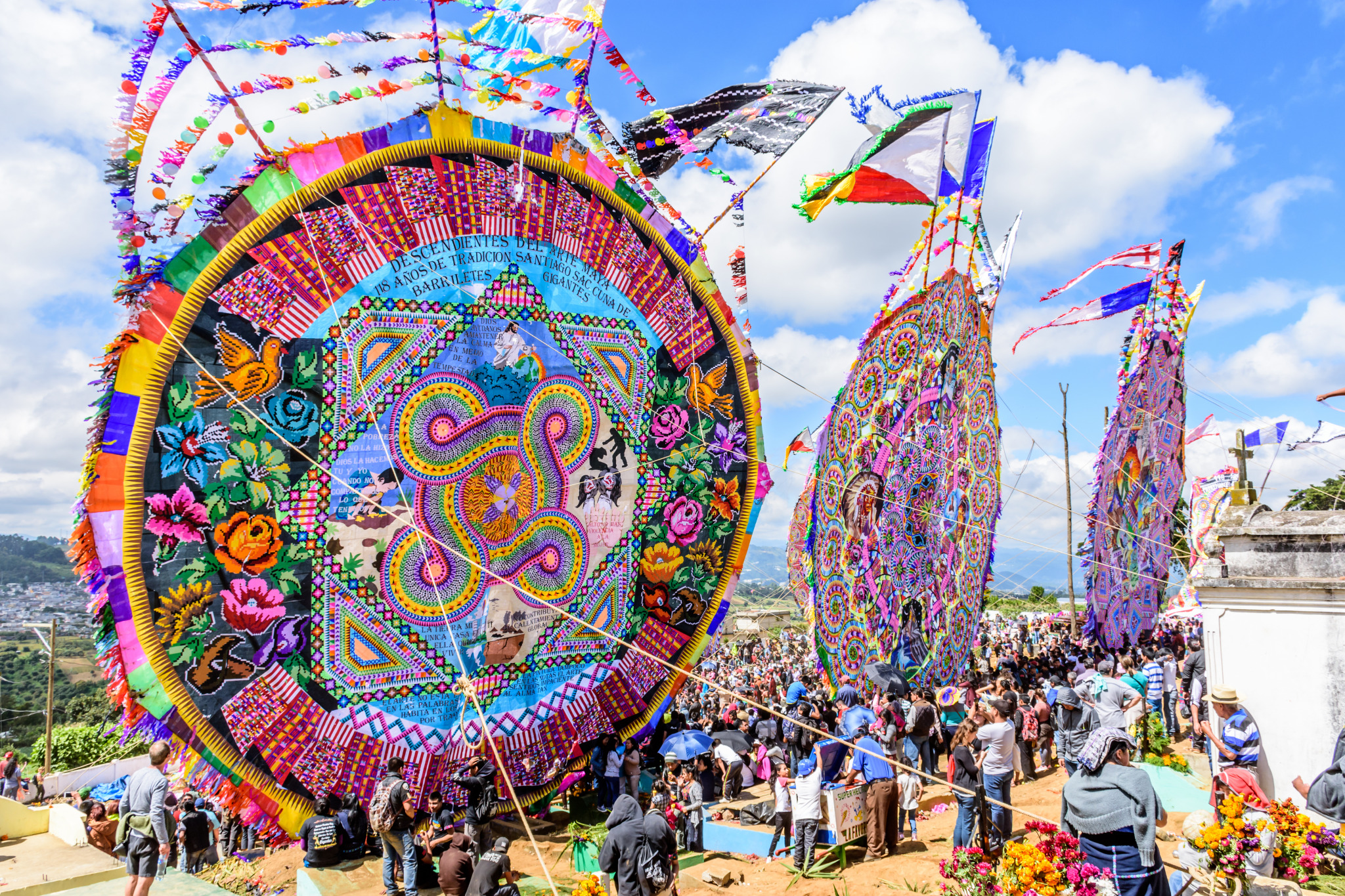All Saints Day, known as “Dia de Todos los Santos” in Spanish, is a vibrant and deeply rooted tradition in many Latin American countries, including Guatemala. This unique celebration is called All Saints Day or All Souls Day and honors the lives of departed loved ones and offers a colorful insight into the rich cultural heritage of the Guatemalan people.
The History of All Saints Day in Guatemala
The roots of All Saints Day in Guatemala can be traced back to a blend of indigenous Mayan beliefs and Catholicism. Before the Spanish conquest, the Mayans had their own rituals and ceremonies to honor the dead. When Catholicism was introduced to the region, these indigenous customs merged with All Saints Day, creating the unique Guatemalan celebration we know today.
The syncretism of these traditions has resulted in a vibrant and diverse celebration that showcases the coexistence of ancient and colonial influences in Guatemalan culture.
How long does All Saints Day last in Guatemala?
All Saints Day festivities in Guatemala typically last for two days, November 1st and 2nd. November 1st is dedicated to honoring deceased children, known as “Dia de Todos los Santos” (All Saints’ Day), while November 2nd is reserved for remembering deceased adults, referred to as “Dia de los Muertos” (Day of the Dead).
During these two days, families come together to celebrate, remember, and pay their respects to those who have passed away. The colorful altars, traditional foods, and visits to cemeteries all contribute to the rich tapestry of this cultural celebration in Guatemala.
Celebrating Dia de los Santos in Guatemala
In Guatemala, this is celebrated with a fascinating blend of indigenous Mayan customs and Catholic influences.
One of the most iconic elements of the Guatemalan celebration is the construction of intricate altars called “ofrendas” in homes and cemeteries. These altars are adorned with photographs of the deceased, colorful marigold flowers, candles, and a variety of symbolic offerings, such as food, drinks, and personal mementos. It is believed that during this time, the spirits of the departed return to enjoy the offerings left for them.
Families also visit the graves of their loved ones during this period, cleaning and decorating the tombs with flowers and candles. This act of remembrance and respect is an essential part of the tradition in Guatemala.
Food also plays a central role in the celebration. Families prepare and share traditional dishes, including “fiambre,” a cold salad made with various ingredients like vegetables, cheeses, and meats. Sweet bread called “pan de muerto” is also a staple during this time.
Tobie, founder and director of Be Humanitarian, said, “[When we were there], the cemetery was bustling with people. There were musicians playing and children running around the tombstones. Many people were painting and beautifying their loved one’s final resting place. The smell of new paint and pine needles filled our nostrils as beautiful maramba music filled the air. We stayed for many minutes listening to the music and listening to the festivities. There was laughter, family communication and bonding.”
The Kite Celebration
One of the most captivating and unique aspects of the celebration is the tradition of flying kites. Known as “barriletes” in Spanish, these large, colorful kites are intricately designed and constructed by skilled artisans and community members in the days leading up to the celebration.
The significance of the kites during the Day of the Dead lies in their role as a means of communication between the living and the deceased. It is believed that as the kites soar high in the sky, they carry messages and prayers to the spirits of the departed.
Reminiscing about their trip to Guatemala, Tobie said, “We rode a bus for several hours and stopped on the side of the highway. We walked up a steep hillside and there were hundreds if not thousands of people there, which was still amazing considering it was still quite early in the morning. The sun was hot and we wished we’d brought our sun hats and umbrellas like the locals. We walked near the kites while families were making their final adjustments and preparing for the flight. As we came up the hill, we saw individuals take off running with the kites behind them as they hoped they would be lifted off the ground and take to the skies. It was spectacular to be able to see the finalization of kite making which families spent months of the previous year building.”
These kites come in various shapes and sizes, often featuring vibrant colors and intricate designs. They are typically made from bamboo and tissue paper, and the process of creating them is a communal effort, involving families and friends coming together to craft these magnificent creations.
On All Saints Day, communities across Guatemala gather in cemeteries and open fields to fly their kites. It’s a joyful and spirited event, with the sky filled with a dazzling array of kites, each representing a connection to the spirit world and a celebration of the lives of those who have passed away.
“It was phenomenal to witness the individuals who spent all these months building these humongous kites that were sometimes the size of houses. They were running with all their might to get their kites high up in the air. We sat on the hillside as the runners ran and the kites flew.” – Tobie
In conclusion, All Saints Day in Guatemala is a multifaceted celebration that beautifully blends indigenous and Catholic traditions. It is a time for families to come together to honor their ancestors and create a vibrant tapestry of remembrance. The addition of the kite celebration adds an extra layer of cultural richness to this already fascinating and deeply meaningful tradition.
This long held celebration dates back thousands of years and is a testament to the enduring cultural heritage of Guatemala and the deep bonds between the living and the deceased.

